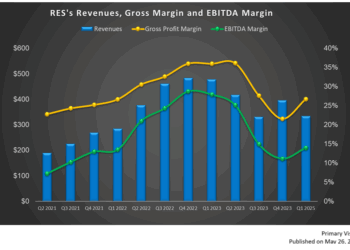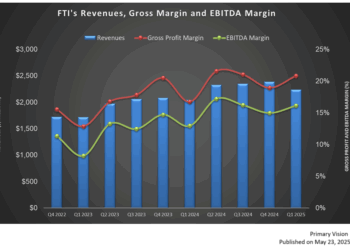By Mark Rossano
Completions are ramping throughout the U.S. with a growing focus in the Permian, which is providing the largest percent of y/y acceleration. The Permian has accounted for 26% y/y oil growth, while only seeing 5.7% rig expansion offset by the staggering 67% increase in drilled but uncompleted wells (DUCs). This highlights the importance of identifying the placement of completion crews that will turn wells to production. Depending on the location and source rock, it will take anywhere from 14 to 25 days to drill a horizontal well, but about 30 to 90 days to fracture the area to turn it to sale. Limits were reached last year in the Permian caused by a shortage of takeaway capacity and availability of hopper cars to delivery proppant. Many of the pipeline issues are in the process of being alleviated across all streams of hydrocarbons- oil, natural gas, and liquids.
These pipelines are also coinciding with a shift in acreage positioning throughout the Permian as a bidding war has erupted for Anadarko between Occidental and Chevron. This will be the beginning of consolidation in the region, with targets focused specifically around firm transport (follow the pipelines). The oil pipelines Cactus II and Epic reaching Corpus Christi will be the first to enter service followed by Gray Oak (Houston), and PGC. Enterprise has already brought on 200k barrels a day with their conversion with Cactus II delivering 670,000 barrels a day. In preparation for the new capacity, frac crews have gotten back to work to fill the pipeline as it comes into service. This view was supported from Haliburton comments saying that the “worst is behind us,” and activity is ramping in North America supporting revenue growth in the coming quarters as E&Ps focus on bringing more volume online.
The bigger, overarching theme is the widening differential between WTI Cushing and Brent. While the U.S. production has grown, most of the new crude has been 45 API Gravity or higher with a large part being driven by the Permian (and more specifically the Delaware Basin). The new light, sweet production has also created a new grade of crude WTI Midland Light with specification of 43 API, which is higher than the WTI Cushing specs of 39.9 API. This creates a discount for WTI Midland as the world oil market remains awash with light, sweet blends, but increasingly short heavy sour availability. The shift is being exacerbated by the changing demands for refined products under IMO 2020- International Maritime Organization’s shift of bunker fuel sulfur components from 3.5% to .5%. Refiners outfitted with cokers are going to require a heavier blend, while simpler assets will only be able to handle so much light sweet crude before hurting crack spreads and economic capacity.
U.S. crude will find problems at the coast given the lack of export capacity currently built, and the oversupply of light sweet crude in the market. The U.S. will average between 2.7M-2.9M barrels a day given the shortfall of coastal infrastructure but will be lumpy given timing delays on loadings as multiple VLCCs can be released for sale at a similar time. This is something that will take time to develop (with an estimate of early June), but in the meantime there are pipes to fill and U.S. refiners coming out of turnaround season, which will drive utilization rates from 87% to summer peak of 96%-97% over the next 4-6 weeks. This will pull more crude into the system and support well-head pricing across the U.S. The growth in activity will be centered around the Permian as E&Ps focus on producing guaranteed volumes. This will improve pricing across the crude complex even as well-head prices in the Permian maintain a $4 discount and Brent vs WTI widens back out to $10. The Brent/WTI spreads will be driven by the growing shortage of heavy in the floating market, which is going to be exacerbated by the cancellation of Iran waivers, Nigerian Bonny Line fire, Angola turn around, Mexican production terminal decline, and Venezuelan sanctions. These impediments will support Brent pricing, while a steeper discount of WTI will help pull more product into the market.
The current backdrop supports the rise of frac spreads across the U.S with the Permian and Eagle Ford seeing the largest increase. The Williston Basin will also see outsized activity given the crude quality is “better” versus other areas onshore. As midstream companies get closer to final completion of pipes, Permian spreads will get closer to 180 supporting prices and supporting revenue growth (and more importantly) margin expansion in oilfield service companies. The headwinds will remain as current global dynamics take center stage, but the ramp is real and will support an expansion of frac spreads and proppant utilization rates.















